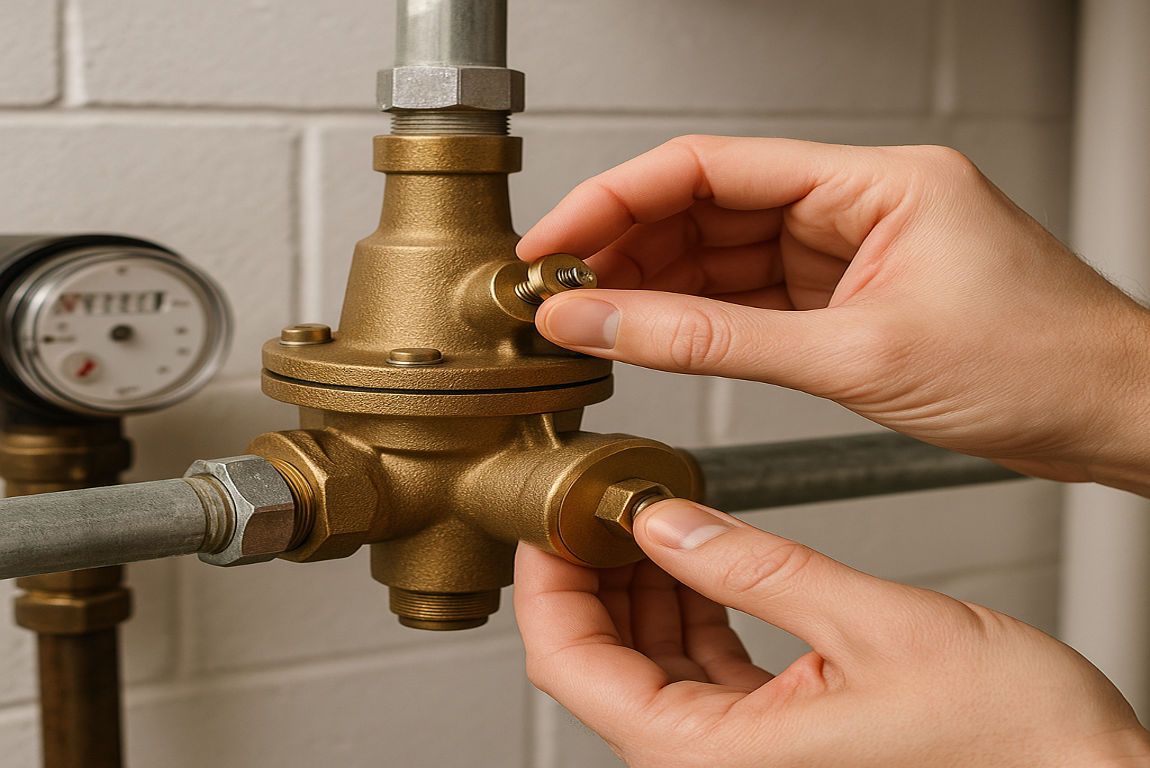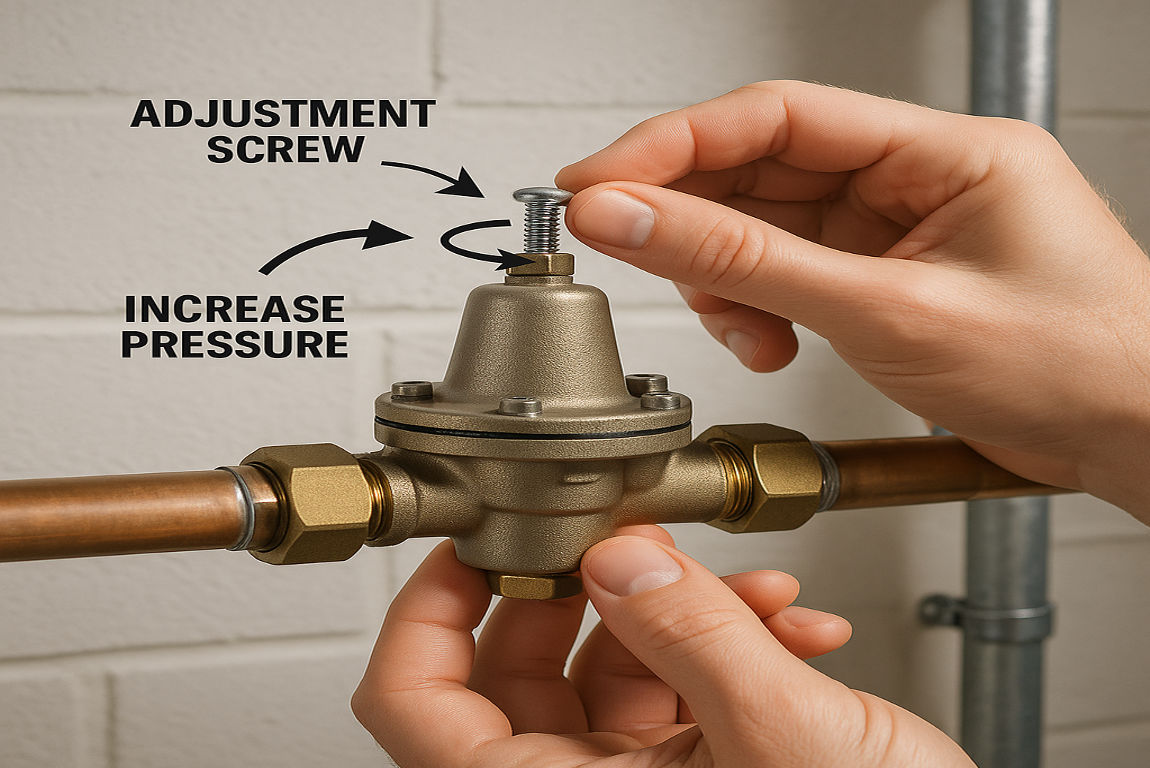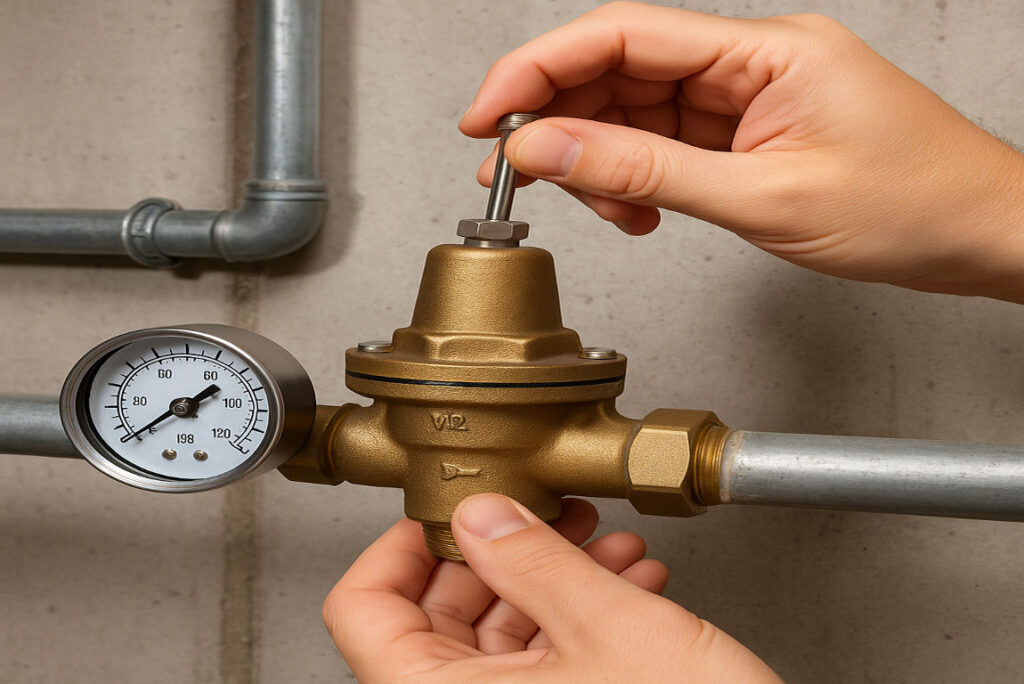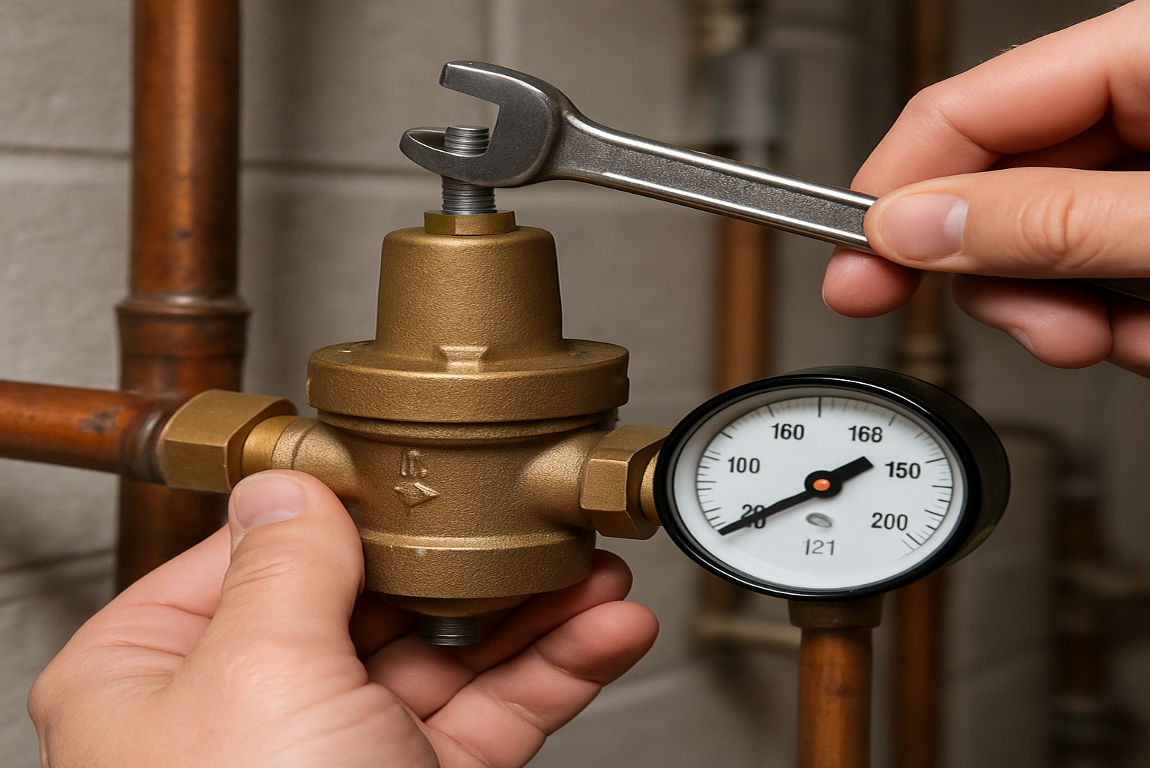Water pressure plays a crucial role in the comfort and functionality of your home. From enjoying a refreshing shower to efficiently running appliances like dishwashers and washing machines, adequate water pressure is essential. However, low water pressure can disrupt daily routines, leaving you frustrated with weak showers, slow-filling sinks, and underperforming appliances.
Before exploring solutions, it’s crucial to understand what water pressure is and its impact on your home. Let’s break it down.
What Is Water Pressure?
Water pressure refers to the force at which water flows through your pipes and out of your fixtures. It’s measured in pounds per square inch (psi). For most households, the ideal water pressure range is between 40 and 60 psi. Anything below this range can result in weak water flow, while excessively high pressure can damage your plumbing system.
Why Does Water Pressure Matter?
Water pressure affects nearly every aspect of your daily life. Here are some examples:
- Showers and Faucets: Low pressure can make showers feel weak, and faucets take forever to fill a sink.
- Appliances Such as Dishwashers, washing machines, and refrigerators with water dispensers require adequate pressure to function correctly.
- Irrigation Systems: Garden sprinklers and outdoor hoses may not work efficiently with low pressure.
Common Causes of Low Water Pressure
Low water pressure can stem from several issues. Here are the most common culprits:
- Partially Closed Main Water Valve: If the main valve isn’t fully open, it restricts water flow into your home.
- Clogged Pipes or Fixtures: Mineral buildup or debris can block water flow in pipes, faucets, and showerheads.
- Malfunctioning Pressure Regulator: A faulty regulator can cause pressure to drop below the ideal range.
- Leaks in the Plumbing System: Even small leaks can reduce overall water pressure.
- Distance from Water Supply or Elevation Issues: Homes located far from the municipal water supply or at higher elevations may experience naturally lower pressure.
How to Test Water Pressure at Home
Testing your water pressure is simple and requires a pressure gauge, which can be found at most hardware stores. Here’s how to do it:
- Attach the pressure gauge to an outdoor faucet or hose bib.
- Turn on the faucet fully and check the reading on the gauge.
- If the pressure is below 40 psi, it’s time to take action.
How to Turn Water Pressure Up in House: Step-by-Step Solutions

Now that you understand the basics, let’s explore practical solutions to increase water pressure in your home. Follow these steps to identify and resolve the issue.
You may also read(discover the hidden gem cousins beach house location).
Check and Fully Open the Main Water Valve
The main water valve controls the flow of water into your home. If it’s not fully open, it can restrict water flow and reduce water pressure.
- Locate the Valve: The main water valve is typically found near your water meter or where the main water line enters your home.
- Ensure It’s Fully Open: Turn the valve counterclockwise until it stops. This ensures maximum water flow.
This simple step often resolves minor pressure issues, so it’s a great place to start.
Inspect and Adjust the Pressure Regulator
A pressure regulator is a device that controls the water pressure entering your home. If it’s set too low or malfunctioning, it can cause low pressure.
What Is a Pressure Regulator?
The pressure regulator is usually located near the main water line, close to the water meter. It’s a bell-shaped device with an adjustment screw.
You may also read(how to understand torts in home real estate).
How to Adjust the Pressure Regulator
- Locate the Regulator: Find the regulator near your water meter.
- Use a Wrench: Turn the adjustment screw clockwise to increase pressure. Make minor adjustments and test the pressure with a gauge after each turn.
- Aim for 40-60 psi: This range is ideal for most households.
Signs of a Faulty Regulator
If adjusting the regulator doesn’t improve the pressure, it may not be very accurate and may require replacement. In this case, consider hiring a professional plumber.
Clean or Replace Faucet Aerators and Showerheads

Over time, mineral deposits and debris can clog faucet aerators and showerheads, reducing water flow.
How to Clean Aerators and Showerheads
- Remove the Fixture: Unscrew the aerator or showerhead.
- Soak in Vinegar: Submerge the fixture in white vinegar for a few hours to dissolve mineral buildup.
- Scrub and Rinse: Use a toothbrush to scrub away any remaining debris, then rinse thoroughly.
If cleaning doesn’t restore pressure, consider replacing the fixture with a new one.
Check for and Repair Leaks in Plumbing
Leaks in your plumbing system can significantly reduce water pressure. Even minor, hidden leaks can cause noticeable drops in pressure.
How to Identify Leaks
- Monitor the Water Meter: Turn off all taps and appliances, then check the water meter to ensure it is accurate. If it continues to move, you likely leak.
- Inspect Visible Pipes: Look for damp spots, puddles, or water stains around pipes.
When to Call a Professional
If you can’t locate or repair the leak yourself, it’s best to contact a licensed plumber to avoid further damage.
Flush the Water Heater to Remove Sediment Buildup
Sediment buildup in your water heater can restrict the flow of hot water, resulting in low water pressure.
How to Flush the Water Heater
- Turn Off the Heater: Shut off the power or gas supply to the heater.
- Drain the Tank: Attach a hose to the drain valve and empty the tank into a safe area.
- Flush with Water: Open the cold water supply to flush out remaining sediment.
- Refill and Restart: Close the drain valve, refill the tank, and turn the heater back on.
Flushing your water heater annually can prevent sediment buildup and maintain good water pressure.
Install a Water Pressure Booster Pump
If your home is located far from the water supply or at a higher elevation, a booster pump can help increase pressure.
What Is a Booster Pump?
A booster pump is a device that increases water pressure by boosting the flow rate. It’s ideal for homes with naturally low pressure due to location.
Installation Tips
- Hire a Professional: Installing a booster pump can be complex; therefore, it’s best to consult a professional plumber.
- Choose the Right Pump: Select a pump that matches your home’s water needs and plumbing system.
Replace Old or Corroded Plumbing Fixtures

Aging or corroded fixtures can restrict water flow, leading to pressure drops. Upgrading to modern, efficient fixtures can improve both pressure and water usage.
Additional Tips and Considerations
To maintain optimal water pressure, follow these tips:
- Regular Maintenance: Clean aerators, showerheads, and water heaters annually.
- Contact Your Water Supplier: If the issue persists, your supplier may need to address a neighborhood-wide problem.
- Professional Inspections: For complex systems, hire a plumber to identify and resolve issues.
- Avoid Excessive Pressure: Don’t exceed 60 psi to prevent pipe damage.
You may also read(unlocking the secrets of top home real estate producers).

